
10 Website Performance Statistics Every SRE Should Know For 2022
Two major shifts are simultaneously taking place in the world of website monitoring: the acceleration of digital dependence has increased the need for high-performing websites and the frequency (and severity) of downtime outages continues to climb.
These shifts have made it more important than ever for businesses of all sizes and industries to monitor uptime and page speed. Continuous testing of critical server, transaction, and integration workflows is imperative to prevent full-scale downtime incidents.
If site reliability is top-of-mind for you, here are 10 stats to know about website performance in 2022.
Your dissatisfied visitors will share their negative experiences with more people than your satisfied visitors will.
Average dissatisfied customers tell between 9-15 people about their experience, and 13% of them tell more than 20 people. While happy customers who get their issues resolved tell about 4-6 people. -White House Office of Consumer Affairs/ Beyond Philosophy
Why this matters: It is clear that negative business relations speak louder than positive ones. Website monitoring can be a vital step in decreasing customer problems related to downtime. Accurate and prompt alerting will help you resolve issues before customers even realize there is one.
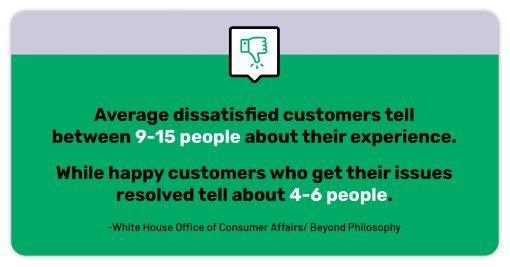
Website downtime can impact SEO by up to 30%
Website search result rankings will drop 30% after six hours of downtime on average and stay down until the next Google Refresh, which can take 30-60 days. –Shopping Cart Elite
Why this matters: Downtime can significantly impact the SEO optimization and rankings you’ve worked so hard for. Strong brand visibility via search is important to every business. Website monitoring can ensure downtime stays at a minimum, leaving more time to improve your businesses’ search engine visibility.
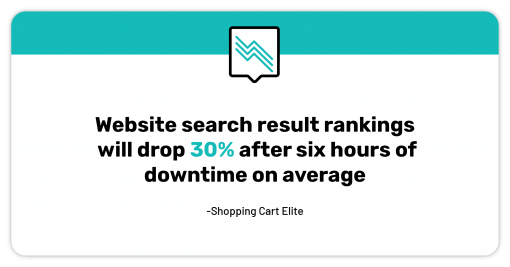
At just 1-2 seconds on average, Time to First Byte standards are high
In an analysis of 5.2 million pages, the average desktop Time to First Byte (TTFB) speed is 1.286 seconds on desktop and 2.594 seconds on mobile. –Backlinko
Why this matters: This gives you an idea of the small amount of time it takes customers to act on your website and how much time you have to grab their attention. Running a page speed test can notify you of any latency issues, so you can identify a problem and resolve it.
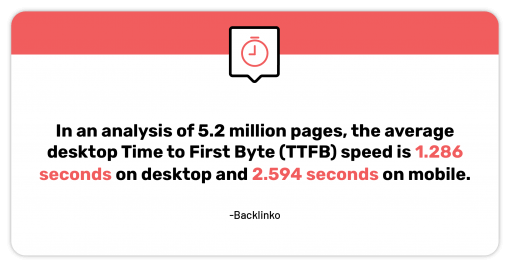
Third party scripts significantly impact page load speed
Third-party scripts significantly slow down page loading speed. Each third party script added to a page increases load time by 34.1 milliseconds. –Backlinko
Why this matters: It is not a matter of removing third-party services, but monitoring the performance of these connections to ensure your site is optimized and performing at its best. Real User Monitoring (RUM) checks collect data on this easily overlooked facet of the user experience.
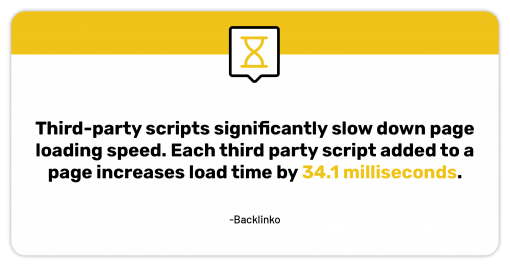
Latency will make or break your bounce rate
Latency is the number one reason in the US why customers decide to bounce from mobile pages. –Deloitte
Why this matters: Monitoring page speed and staying up to date with any lag time is vital to keeping customers on your website and bounce rates low.

Website downtime costs thousands of dollars – by the minute
The average cost of IT downtime is 5,600 per minute or about 300,000 per hour. –Gartner
Why this matters: Time is money. Downtime comes with a heavy price and virtually halts all online business when it strikes. Web performance monitoring acts as a safety net to warn you before small, localized issues turn into lost revenue.
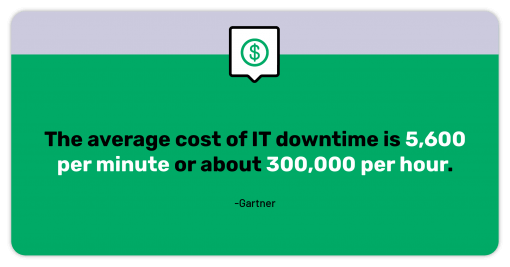
Common causes of downtime include human error and power outages
Most common causes of downtime are human error, equipment failure, software/ third-party services and power outages. -Infonetics Study
Why this matters: All of these causes of downtime share some commonalities – they are unpredictable and unavoidable, but manageable. Comprehensive website performance monitoring allows you to put yourself in the best position possible to mitigate downtime by catching it as soon as it happens.
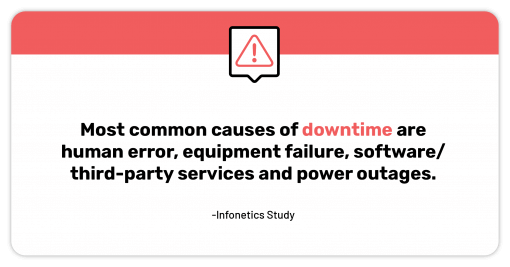
Just 0.1s improvement in load time makes a difference
Improving your load time by 0.1s can boost conversion rates by 8% –Deloitte
Why this matters: In an E-Commerce environment, milliseconds matter. The improvement from just 0.1 seconds has a big impact on conversion rates, so it’s important to keep a steady eye on load times with a page speed tool.
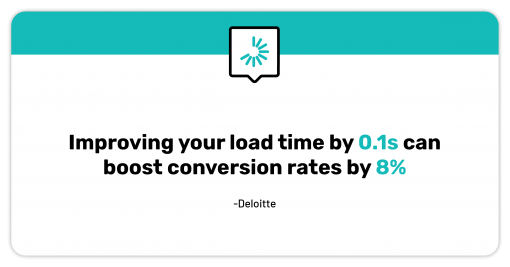
Downtime recovery can take longer than you think
Interruptions consume on average 238 minutes per day and the time to get started back up after an interruption consumes another 84 minutes a day. The time lost to stress and fatigue steals another 30 minutes a day. -The Washington Post
Why this matters: The impact of downtime goes beyond just the time to get things back up and running. There is a domino effect of wasted time that trickles through IT and support teams, hindering productivity.
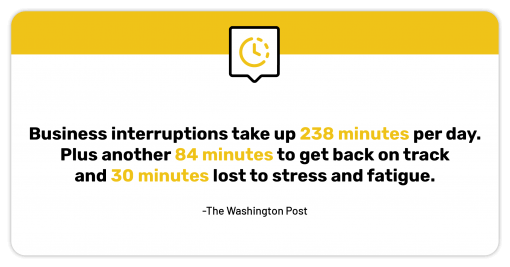
Outages are becoming more common across all industries
Across all sectors, 82% of companies have experienced at least one unplanned downtime outage over the past three years, with the average number of outages being two. –BusinessWire
Why this matters: We have reached a point where outages and downtime incidents are unavoidable. It is now a matter of how prepared you are and what steps can be taken to resolve them. Website monitoring is your best bet to reach UPtime goals.
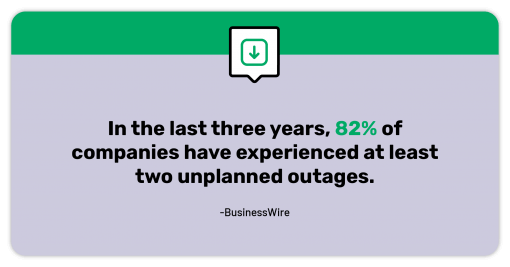
If we’ve convinced you website performance monitoring is something you needed yesterday, start monitoring in minutes with Uptime.com’s 100% free 14-day trial, no credit card required → Start now.
Minute-by-minute Uptime checks.
Start your 14-day free trial with no credit card required at Uptime.com.
 Uptime.com Blog
Uptime.com Blog


